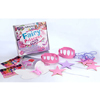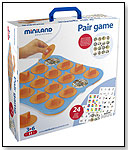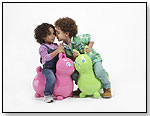|
|
21st-Century Toy Store: Make Magic Online How to Recreate Your Store’s Atmosphere on the Web
Similarly, your potential customers may not know how to build a website, but they’ll know a bad one when they see it. When you put up a website, you are creating an illusion of your store on the Internet. Here are some tips to help you recreate the magic of a real toy store: Invite an Emotional Response. What do customers experience when they walk into your store? Do they feel a sense of wonder and excitement? If you can produce a positive emotion with the design of your website, it will encourage customers to use your site and return. 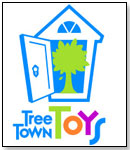 “The more clues we can give [a visitor] about what we want him to understand, the more precisely his interpretation will align with our own,” writes Amber Simmons, a web designer in Austin, Texas. “The more clues we can give [a visitor] about what we want him to understand, the more precisely his interpretation will align with our own,” writes Amber Simmons, a web designer in Austin, Texas. Don’t Crowd. “If you think of any store experience you have ever enjoyed, it feels luxurious,” Chris Drummond, a visual designer in Monroe, Michigan., told TDmonthly Magazine. “There are islands of products, with space and paths between them. In a dollar store, there is clutter, no path, and the experience feels cheap. Cluttering a web page causes customers to feel crowded.” Tell Your Story. Your store is a unique place. Show your customers and visitors what your store looks like; tell them why you sell toys for a living. Photos of your store and of you with your staff help tell the story, too, contributing to a “human” experience online. Use a Logical Layout. Customers should be able to find anything on your website in about three clicks. Your website should cleanly guide customers to the right information, with consistent navigation links on each page and clear indications of where they are relative to the main page. These navigational ‘breadcrumbs’ allow your user to navigate back through your site, and always know where they are in your catalog. 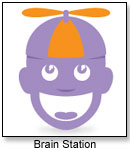 Permit Searching and Browsing. How many customers tell you they are “just looking” when they enter your store? How many say they’ve come for a specific product? Online, both behaviors must be supported. A search form allowing customers to find content is just as important as good navigation links. If your customers can search your product offerings by name, keywords, the brand, or other attributes, they are more likely to find what they are looking for and more likely to purchase. Permit Searching and Browsing. How many customers tell you they are “just looking” when they enter your store? How many say they’ve come for a specific product? Online, both behaviors must be supported. A search form allowing customers to find content is just as important as good navigation links. If your customers can search your product offerings by name, keywords, the brand, or other attributes, they are more likely to find what they are looking for and more likely to purchase. Be True to Yourself. You have (I hope!) crafted your store image carefully, so don’t skimp when it comes to your design online. A consistently branded online and brick-and-mortar experience will help secure your store in customers’ minds as professional and trustworthy. Make Customers Feel Safe. What is behind your “Contact Us” link? Just an email form? Uh oh! “Customers don’t want to feel that they are separated from the retailer,” Sherrie Cannon, owner of Discovery Depot in Cookeville, Tenn., told TDmonthly. “Having your telephone number and store hours on every page allows customers to feel connected.” Search engines can bring customers to any page on your site; have the most important information on each page so customers don’t have to work to get it. Next month: How to Sell Online Without Losing Your Mind.  Writer's Bio: After over 20 years of working in Information Technology, teaching and consulting, Hans turned his focus to selling toys. He runs Brain Station(http://brain-station.com) with his wife Patricia and their children Keller and Simone. Brain Station started in 2002 as a "crazy idea" in the family home, and has grown to be a successful Internet specialty toy retail operation and fulfillment center. He opened Tree Town Toys (http://treetowntoys.com) as a brick-and-mortar specialty store in 2006, and is launching Dragonfly Depot (online fulfillment and distribution of specialty toys) in 2007. He currently serves on the board of the American Specialty Toy Retailing Association. Read more articles by this author Writer's Bio: After over 20 years of working in Information Technology, teaching and consulting, Hans turned his focus to selling toys. He runs Brain Station(http://brain-station.com) with his wife Patricia and their children Keller and Simone. Brain Station started in 2002 as a "crazy idea" in the family home, and has grown to be a successful Internet specialty toy retail operation and fulfillment center. He opened Tree Town Toys (http://treetowntoys.com) as a brick-and-mortar specialty store in 2006, and is launching Dragonfly Depot (online fulfillment and distribution of specialty toys) in 2007. He currently serves on the board of the American Specialty Toy Retailing Association. Read more articles by this author |
| |||||||||||||||||||||||||||||||||
Disclaimer Privacy Policy Career Opportunities
Use of this site constitutes acceptance of our Terms of Use.
© Copyright 2025 PlayZak®, a division of ToyDirectory.com®, Inc.

